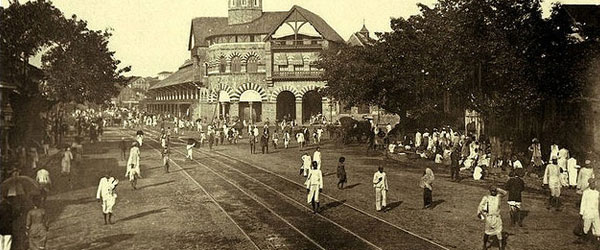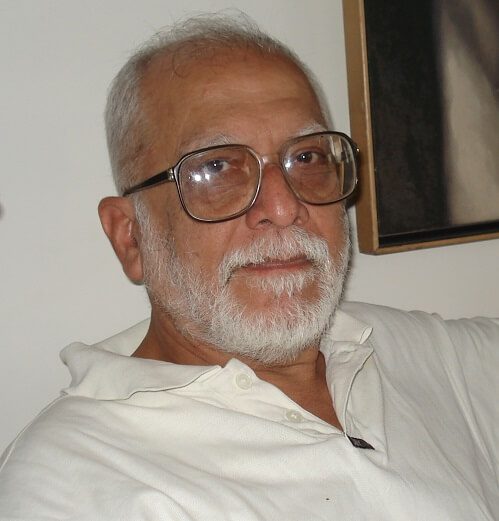The Bombay Environmental Action Group (BEAG) is an environmental NGO founded in 1979 by a group of professionals, artists, nature enthusiasts and entrepreneurs in Mumbai who were concerned about the impact of industrial and residential development on the environment and on local populations.
In 1974, a group of farmers and fishermen in Alibag approached civil right activists living in the area for help. They had heard that their lands were going to be forcibly acquired by the government for a chemical factory.
The activists were able to confirm from official sources that the government was in fact planning to acquire land between Alibag town and Mandwa village to build a large petrochemical complex, However, no more information was available to the activists or to the local population.

Meanwhile at Mandwa, Bombay Bachao’s Saad Ali, S.K. Das and Navroz Mody began making inquiries about the impact that the proposed petrochemical complex would have on Alibag’s environment and its agricultural and fishing communities.
It soon became apparent that a number of prospective developments were being planned in and around Mumbai that had the same problems that the people of Alibag were facing, namely lack of information for concerned citizens, lack of any planning policy on the part of the government, and a total absence of concern for the impacts such developments would have on people or the environment.
Given the extent of the threat, the members of Bombay Bachao realized that the only way to face the challenge in an organized manner was to form an NGO. The Bombay Environmental Action Group (BEAG) was registered as a Society on April 25, 1979.
Concerned about the possible destruction of the coastal green belt just 14 km across the harbour for a chemical complex, a group of citizens in Mumbai came together to create an informal organization that they called Bombay Bachao (Save Bombay) and decided to investigate the threat.
In Nhava, Bombay Bachao’s Shyam Chainani, an active sailor, began his investigation by connecting with India’s oldest nautical institute, the Training Ship Rahman, and with the Marine Museum at Nhava, both of which were also being threatened with eviction by the proposed petrochemical complex. The museum officials also expressed concern about the threat to the historic Elephanta Caves on nearby Elephanta Island.
BEAG’s first committee was constituted with ornithologist Dr Salim Ali as its President, businessman and social worker Saad Ali and social activist Navroz Mody as Vice-Presidents, Industry Executive and Environmentalist Shyam Chainani as Honorary Secretary, Mariner and Businessman Kersi Naoroji as Treasurer, and Auditor and Financial Consultant Kumar Advani, Architect S.K. Das, Artist Ralli Jacob, Chartered Accountant Farid Gulmohamed, and ornithologist Humayun Abdulali as Executive Committee members.
In 1981, BEAG took up another cause: regulation of the unplanned and illegal construction in the ecologically fragile hill station of Matheran. In 1982, BEAG extended its activities to Pune, and in 1983 to the eco-sensitive region of Mahabaleshwar and Panchgani.

Since then, BEAG has been involved with environmental issues all over the country, interacting with government agencies in Kashmir, Himachal Pradesh and Uttaranchal in the north; with Madras, Pondicherry and Trivandrum in the south; and as far east as the Andaman and Nicobar Islands in the Bay of Bengal.
Since its formation in 1979, BEAG has taken up numerous wide-ranging issues: the protection of built heritage, coastal zones, hill stations, cantonments and forests.
BEAG has worked closely with local and regional planning bodies to draft legislation relating to urban heritage conservation and the protection of eco-sensitive areas. It has participated in innumerable public hearings and served on several planning boards. When necessary, it has also called on the judicial system, through public interest litigation, to achieve its goals.

(1942 to 2010)
Shyam Chainani
Founding Member & Hon. Secretary, BEAG
Of special note would be the contribution of the Shyam Chainani, founding member and Hon. Secretary of BEAG. He was virtually single handedly responsible for shaping of the country’s Heritage legislation, including the legislation for most of the States in the country.
His voluminous work on Heritage is documented in his book “ Heritage and Environment, An Indian Diary ” which details his involvement in heritage issues and the shaping of Heritage regulation and legislation in this country.
Shyam Chainani was meticulous in documenting the major initiatives of BEAG – both achievements and setbacks. BEAG is therefore the repository of the largest and most complete collection of environmental campaign documentation in the country. BEAG’s archives are being digitized and will be progressively made available to the public on this website as a database and resource centre for other NGOs.

(1942 to 2010)
Shyam Chainani
Founding Member & Hon. Secretary, BEAG
Of special note would be the contribution of the Shyam Chainani, founding member and Hon. Secretary of BEAG. He was virtually single handedly responsible for shaping of the country’s Heritage legislation, including the legislation for most of the States in the country.
His voluminous work on Heritage is documented in his book “ Heritage and Environment, An Indian Diary ” which details his involvement in heritage issues and the shaping of Heritage regulation and legislation in this country.
Shyam Chainani was meticulous in documenting the major initiatives of BEAG – both achievements and setbacks. BEAG is therefore the repository of the largest and most complete collection of environmental campaign documentation in the country. BEAG’s archives are being digitized and will be progressively made available to the public on this website as a database and resource centre for other NGOs.
